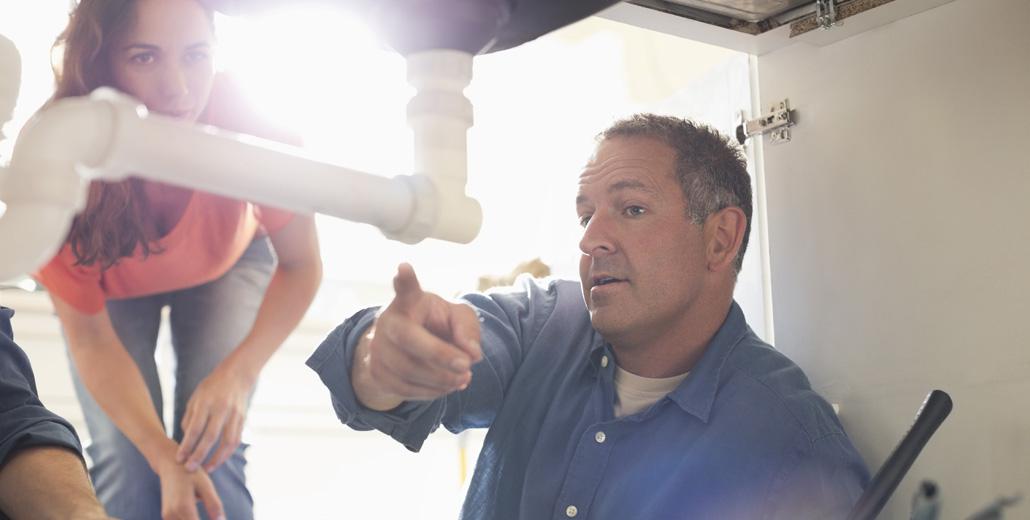
Whether you’re looking for upgrades or just repairs, there is some important plumbing terminology every homeowner should know. Understanding basic terms can help you when working with a professional. Knowing the terminology keeps communications clear and helps level the field.
Parts and Fixtures
Knowing the right plumbing terminology helps you coordinate with your plumber or perform simple DIY tasks yourself.
Water closet
An old-fashioned term for “toilet,” professionals still often refer to them as “WCs.”
Plumbing trap
Also called the “P-trap,” this P or S-shaped bend in your drainpipe holds a pool of water that prevents sewer gasses from backing up into your home.
Escutcheon
This is the decorative flange surrounding holes in the wall where the faucet, handles, and showerhead are installed.
Fixture
Any plumbing unit that removes waste or provides water, such as toilets (WCs), sinks, baths, or showers.
Gray water
This is the name for any waste from your residential water use that is not from the toilet. It includes wastewater from sinks, showers, and washing machines, and is sometimes used for landscape irrigation.
Cleanout plug
The cleanout plug is a handy access point in your waste pipes that allows you or a plumber to easily reach and remove blockages. It’s typically located outdoors in the backyard and has a removable cover for easy access.
Hose bibb
This is the correct term for your outdoor water faucets.
Main line
The main line is the pipe carrying water from your municipal agency. The main connects from your water meter to various points inside your home.
Supply line
This is the piping that carries water from the main to various fixtures in your home.
Supply valve
Supply valves are normally found at the point of use to provide water to a particular fixture. You’ll often find them about 12” above the floor, and they allow you to turn off water to a sink or toilet for repair or replacement.
Vent and vent stack
The vent stack ensures that any gases from sewers can rise and be dispersed outside your home. Plumbing codes ensure that vents and vent stacks remove dangerous gasses and odors via proper venting.
Air gap
An air gap is defined as “the unobstructed vertical space between a water outlet and the flood level of a fixture.” But it’s also a device for creating one, specifically for installing a dishwasher. The air gap keeps dirty water from backflowing into the drinking water.
Backflow preventer
This is another device that prevents the contamination of drinking water with wastewater. You’ll normally only see these on commercial or multi-family buildings. However, if you have a well or irrigation system, you may be required to have one installed.
Learning More
Now that you know a few important plumbing terms and concepts, you may have questions about whether your home is up to current code. Make an appointment today with the pros at Benjamin Franklin Plumbing in Pleasantville. They can perform an inspection to ensure your home’s plumbing is up to date.
